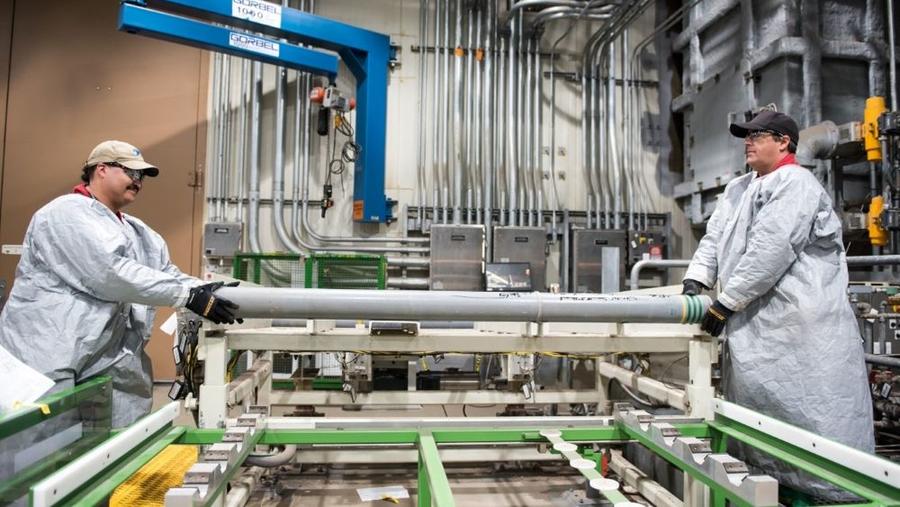Leidos helps the U.S. Army eliminate chemical weapons stockpile
Workers at the Blue Grass Chemical Agent-Destruction Pilot Plant in Kentucky load the last remaining U.S. chemical munition into a demilitarization system. Photo: PEO ACWA
Earlier this month, the White House, Defense Department and Organization for the Prohibition of Chemical Weapons confirmed the U.S. has completed destruction of its enormous Cold War-era chemical weapons stockpile as well as the facilities that manufactured them.
Leidos provided extensive technical and program support to the U.S. Department of Defense on the demilitarization effort at all locations where the munitions were stored.
These toxic and deadly weapons, now banned by international law due to their inhumane nature, took more than 30 years to irreversibly destroy.
The milestone makes good on the commitment made by 193 member states to chemically disarm under the 1993 Chemical Weapons Convention.
As a part of an integrated effort, Leidos supported the Defense Threat Reduction Agency (DTRA) in treaty compliance and inspector interface.
The U.S. is the final nation state to complete disarmament, which means all chemical weapons declared under the treaty have now been destroyed.
Leidos supported the U.S. Army Chemical Materials Activity (CMA) on the large-scale effort at seven sites:
- Johnston Atoll in the Pacific Ocean
- Aberdeen Proving Ground, Maryland
- Newport Chemical Depot, Indiana
- Pine Bluff Arsenal, Arkansas
- Anniston Army Depot, Alabama
- Umatilla Chemical Depot, Oregon
- Deseret Chemical Depot, Utah
Leidos also supported the Program Executive Office Assembled Chemical Weapons Alternatives (PEO ACWA) in destruction of the final weapons at Pueblo Chemical Depot in Colorado and Blue Grass Army Depot in Kentucky.
James Ridgely, Leidos Senior Program Manager, said he’s proud his teams contributed to this important effort to destroy an entire class of weapons of mass destruction.
Ridgely said the scope of his team's work on the project included technical expertise, engineering support, compliance with treaty mandates, planning analysis for both the technical and program efforts and public outreach.
“Leidos personnel have been side-by-side with government teams and contributed significantly to key technical and programmatic decisions that led to the safe completion of operations,” says Ridgely. “We’re proud to have been part of making the world a safer place by eliminating these deadly weapons."
In a statement, President Biden stressed the importance of disarmament among the small number of nations states not ratified in the treaty.
“Today—as we mark this significant milestone—we must also renew our commitment to forging a future free from chemical weapons,” President Biden wrote. “I continue to encourage the remaining nations to join the Chemical Weapons Convention so that the global ban on chemical weapons can reach its fullest potential.”
Please contact the Leidos media relations team for more information.
Related:

